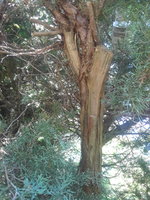I never have, but wanted to comment that this is a VERY interesting and special circumstance for layering of any sort. I'm not sure if you would need to get between the live vein and the shari to avoid a significant part of the new tree dying off, and/or just making more shari. I'm fairly new to the game, but I understand junipers are quite good at compartmentalizing their growth.
Can you get us some pics?
I'll speculate that, if it's close enough to the ground, ground layering may be a better idea. Junipers often essentially self ground layer routinely, so it might yield better results by following the tree's natural tendency as it were. Even if it works, building good nebari will be a long term project afterward.

